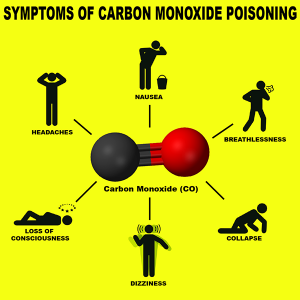Carbon Monoxide Poisoning
Carbon monoxide (CO) is a colorless, odorless poison gas formed by incomplete combustion. Carbon monoxide is a rare cause of diving problems, and is the most common cause of death in fire victims. Carbon monoxide poisoning is easily missed and underdiagnosed as a cause of headaches, fatigue, dizziness, and other neurologic complaints. Sources of carbon monoxide: exhaust gases from cars, propane heaters, furnaces, barbecue grills, house fires, smoking and even paint stripper which is a source of methylene chloride - which is metabolized into CO. CO mainly affects the heart and brain. Carbon monoxide poisoning has many components including hypoxia, cellular toxicity, and brain injury from leukocytes behaving badly. Some Signs and symptoms of CO poisoning are: Headaches, dizziness, weakness, nausea, tachycardia, tachypnea, and possible retinal changes.Benefits From Hyperbaric Oxygen Treatment
- HBOT (Hyperbaric Oxygen Therapy) speeds the carboxyhemoblobin dissociation and improves tissue oxygenation.
- HBOT reduces cerebral edema and intracranial pressure by constricting brain vessels.
- HBOT inhibits the toxic process, speeds recovery, reduces the number delayed functional and neurologic abnormalities and reduces mortality. HBOT stops lipid peroxidation, a component of reperfusion injury, helping prevent brain injury.
- Thom, et al., recently reported a prospective randomized trial in which the incidence of DNS was compared with patients treated with ambient pressure and hyperbaric oxygen. In all cases, treatment was begun within six hours of poisoning. Twenty three percent (seven of 30 patients) treated with ambient pressure oxygen developed sequelae, whereas none of 30 (zero percent) treated with HBOT develop DNS.
